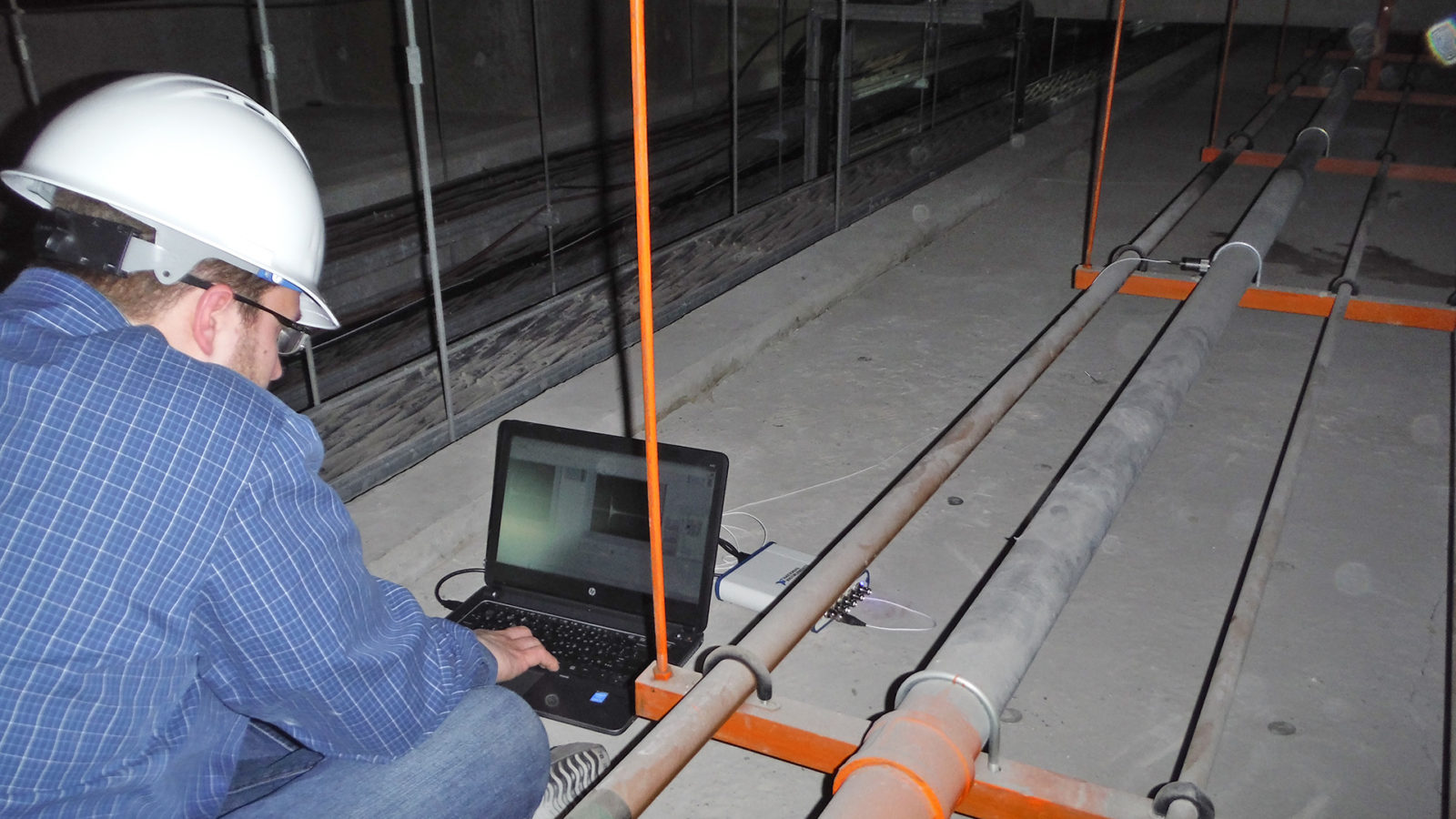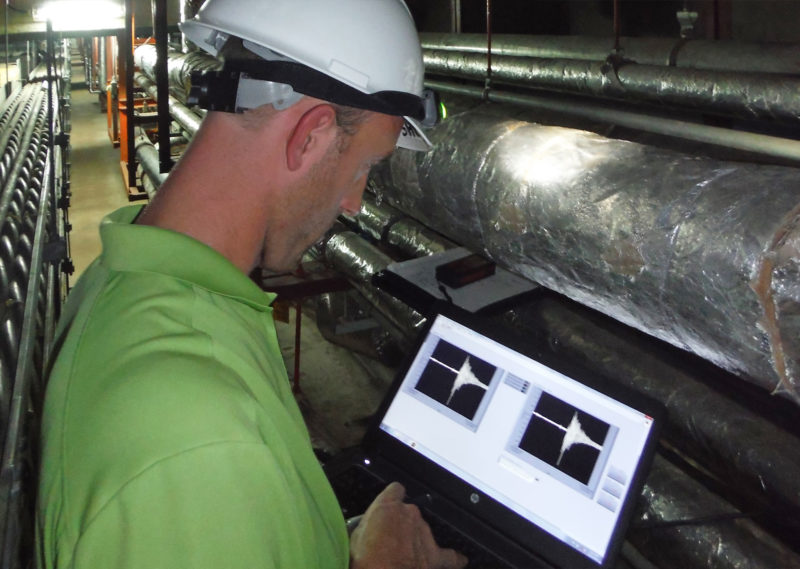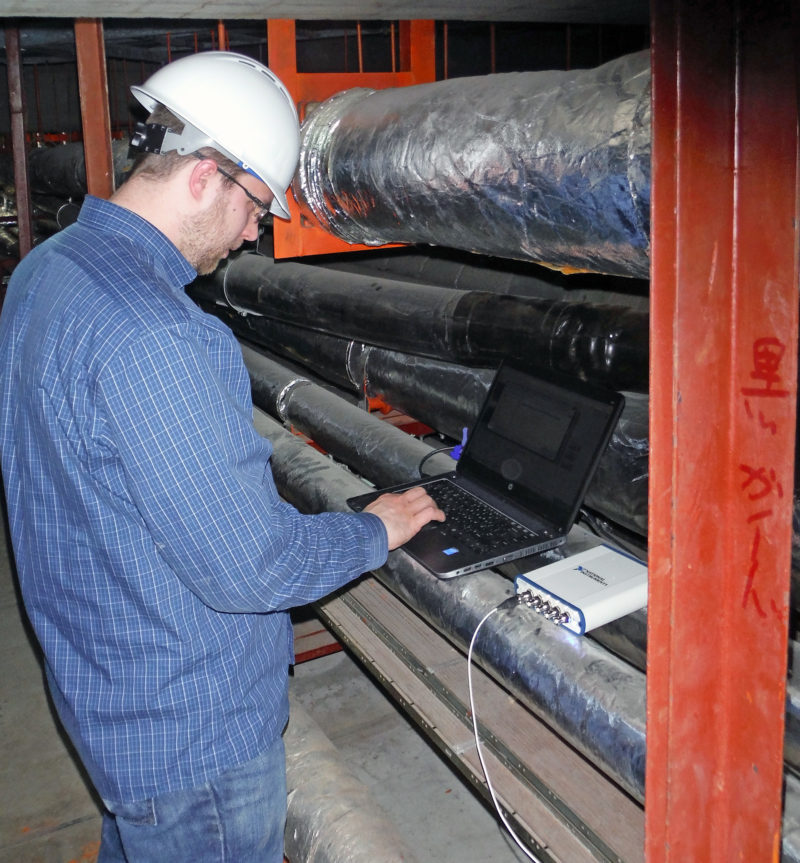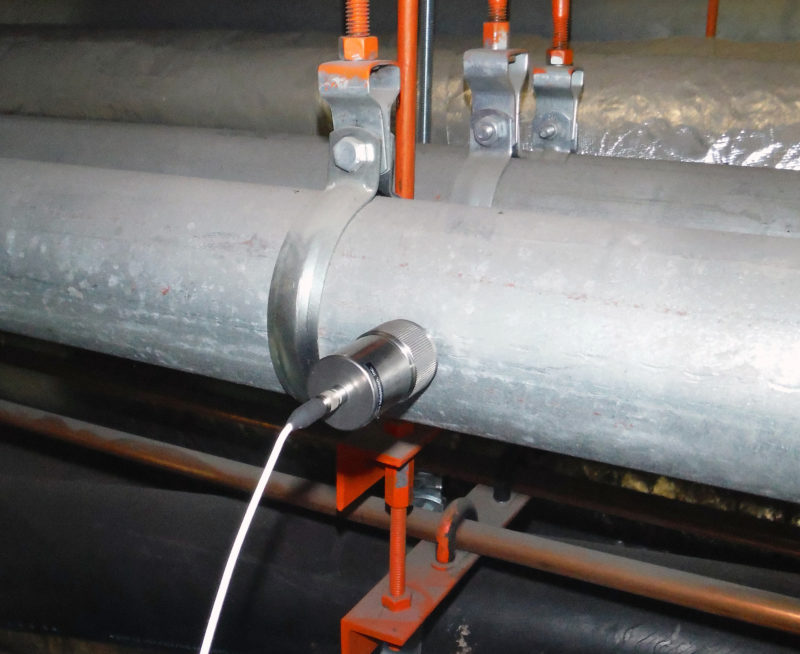Knowledge is Power
A New Era: Using sensors to measure building movement can enhance traditional methods of information gathering and result in decreased uncertainty regarding how much a structure is moving and in determining its structural properties. We have extensive experience in structural analysis, condition assessment and structural retrofit, and structural monitoring enhances our ability to provide tailored solutions to your specific problems.
Floor Vibration: It may surprise many people to learn that the United States building codes do not explicitly address floor vibrations. As a result, it can be common for floors to exhibit excessive vibration that can be a nuisance to occupants or may negatively affect sensitive equipment, such as MRI machines or other laboratory equipment. In addition, dynamic loading – such as in dance halls, stadiums, gymnasiums, exercise facilities, or pedestrian walkways – can exacerbate problems associated with vibration. Especially in mixed-use developments, the vibrations caused by one occupant (i.e., an exercise facility) can disrupt the experience of adjacent occupants.
Construction Site Vibration: Vibration and noise from construction activities such as pile driving, foundation excavation, demolition, shoring, and other site construction work can potentially cause adverse affects on adjacent structures and facilities that are sensitive to site vibration and noise. Facilities such as laboratories, close tolerance machine manufacturing facilities, historic buildings, high-rise buildings, robotic manufacturing, medical office buildings, hospitals, and convalescent facilities are just a few types that are susceptible to the potential adverse affects of adjacent construction noise and vibration. Our experience in dynamic analyses coupled with our state-of-the-art vibration measurement and recording tools allow us to troubleshoot these construction-related vibration issues to determine vibration mitigation or isolation solutions BEFORE they become a problem to an adjacent facility with sensitive equipment, processes, and/or occupants. Our experience and expertise also allows us to help an owner establish a baseline amount of acceptable site vibration so these effects can be controlled and monitored effectively during construction.
WANT TO MONITOR YOUR STRUCTURE? CONTACT US




